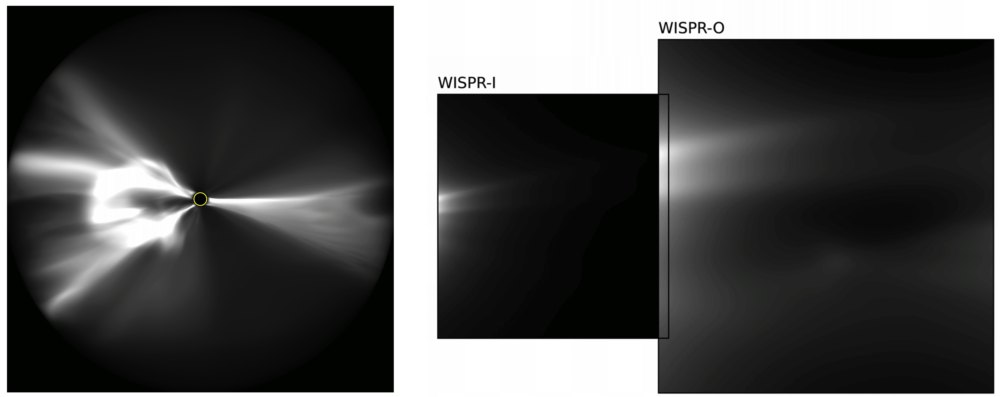One of the greatest challenges in coronal mass ejection (CME) forecasts is that most input parameters for prediction models—usually derived from remote-sensing imagery—are only loosely constrained and, thus, are associated with large uncertainties that are difficult to quantify. One prominent example is the mass, with crucial implications on the interplanetary propagation of a CME. In this project, we propose to explore a technique based on white-light imagery of the solar corona and/or heliosphere that has drawn little attention to date due to its inherent complexity, i.e. tomography. The success of tomographic inversion is greatly improved with the number of observing viewpoints, hence making the technique hard to apply and validate using the small number of space-based assets that have been available thus far.
To overcome the limitations arising from an insufficient number of observers, we propose to apply tomography techniques on modelled CMEs and, hence, on synthetic white-light images that emulate existing coronagraph and heliospheric imager data. We will derive CME input parameters (such as density, speed, size, mass) for different configurations of the observers and determine the optimal arrangement of spacecraft for an adequate recovery of the full 3D CME structure. We will compare tomography results with forward modelling (i.e., the most common remote-sensing analysis tool currently in use) and use the inputs derived with both techniques for CME propagation models. We anticipate that the results of the proposed project will not only better inform the planning and development of future heliospheric missions, but will also provide a benchmark for current CME propagation models and forecasting tools.

